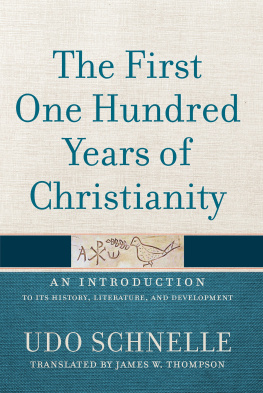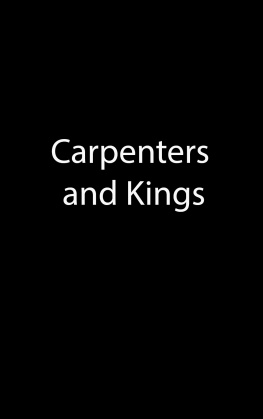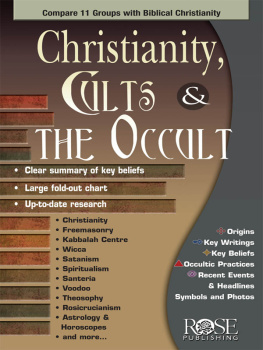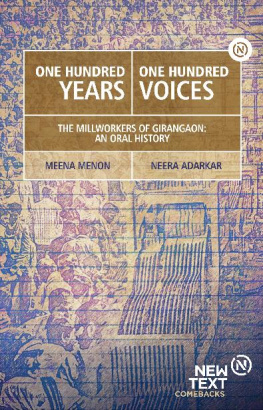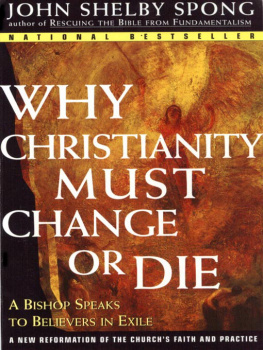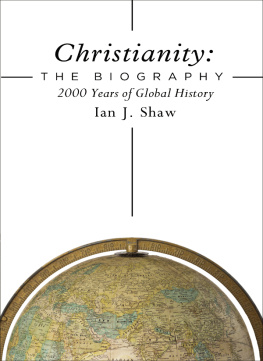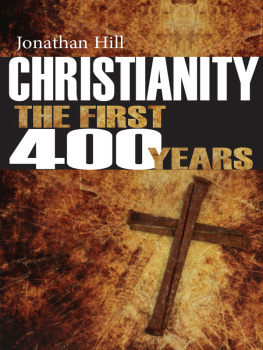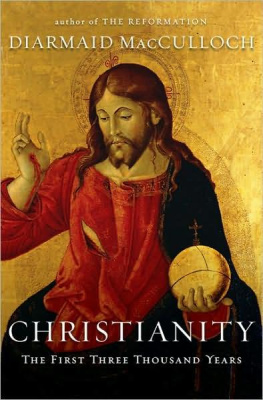Udo Schnelle - The First One Hundred Years of Christianity
Here you can read online Udo Schnelle - The First One Hundred Years of Christianity full text of the book (entire story) in english for free. Download pdf and epub, get meaning, cover and reviews about this ebook. year: 2020, publisher: Baker Publishing Group, genre: Religion. Description of the work, (preface) as well as reviews are available. Best literature library LitArk.com created for fans of good reading and offers a wide selection of genres:
Romance novel
Science fiction
Adventure
Detective
Science
History
Home and family
Prose
Art
Politics
Computer
Non-fiction
Religion
Business
Children
Humor
Choose a favorite category and find really read worthwhile books. Enjoy immersion in the world of imagination, feel the emotions of the characters or learn something new for yourself, make an fascinating discovery.
- Book:The First One Hundred Years of Christianity
- Author:
- Publisher:Baker Publishing Group
- Genre:
- Year:2020
- Rating:3 / 5
- Favourites:Add to favourites
- Your mark:
- 60
- 1
- 2
- 3
- 4
- 5
The First One Hundred Years of Christianity: summary, description and annotation
We offer to read an annotation, description, summary or preface (depends on what the author of the book "The First One Hundred Years of Christianity" wrote himself). If you haven't found the necessary information about the book — write in the comments, we will try to find it.
The First One Hundred Years of Christianity — read online for free the complete book (whole text) full work
Below is the text of the book, divided by pages. System saving the place of the last page read, allows you to conveniently read the book "The First One Hundred Years of Christianity" online for free, without having to search again every time where you left off. Put a bookmark, and you can go to the page where you finished reading at any time.
Font size:
Interval:
Bookmark:
Originally published as Udo Schnelle, Die ersten 100 Jahre des Christentums , 3. vernderte Auflage
2019 by Vandenhoeck & Ruprecht GmbH & Co. KG, Gttingen. All rights reserved.
English translation 2020 by Baker Publishing Group
Published by Baker Academic
a division of Baker Publishing Group
PO Box 6287, Grand Rapids, MI 49516-6287
www.bakeracademic.com
Ebook edition created 2020
All rights reserved. No part of this publication may be reproduced, stored in a retrieval system, or transmitted in any form or by any meansfor example, electronic, photocopy, recordingwithout the prior written permission of the publisher. The only exception is brief quotations in printed reviews.
Library of Congress Cataloging-in-Publication Data is on file at the Library of Congress, Washington, DC.
ISBN 978-1-4934-2242-5
Cover
Half Title Page
Title Page
Copyright Page
Illustrations
Translators Preface
Authors Preface to the American Edition
Abbreviations
1. On Writing a History of Origins
1.1 History as Interpretation of the Present and the Past
1.2 History and Method
2. Definition and Demarcation of the Epoch
2.1 Primitive Christianity or Early Christianity?
2.2 The Chronological Framework
3. Presuppositions and Contexts
3.1 Hellenism as a World Culture
3.2 Greco-Roman Culture
3.3 Judaism
3.4 The Political and Economic Situation in the Roman Empire in the First and Second Centuries CE
4. The New Movement of Christ-Believers
4.1 The Easter Events
4.2 The Origin of Christology
4.3 The Founder of a New Discourse and New Thinking
5.1 The Beginnings
5.2 Groups and Persons
5.3 Places: The Temple
5.4 Conflicts
5.5 Theological Institutions and Discourse
5.6 Texts: The Passion Narrative
5.7 The Theological Development of the Early Jerusalem Church
6. Early Churches and Early Mission outside Jerusalem
6.1 Contexts: Mobility and Religious-Philosophical Variety in the Roman Empire
6.2 Persons
6.3 Groups: The Jesus Movement
6.4 Lands and Places
6.5 Competitors and Conflicts
6.6 The Development of the Communitys Own Cult Praxis and Theology: The First Forms of Institutionalization
6.7 Texts
6.8 The First Missionary Journey and the Mission to the Gentiles without the Requirement of Circumcision
6.9 The Three Great Currents at the Beginning
7. The Apostolic Conference
7.1 The Initial Conflict
7.2 The Essential Problem
7.3 The Process
7.4 The Result
7.5 Interpretations of the Outcome
7.6 The Incident at Antioch
8. The Independent Mission of Paul
8.1 Perspective, Process, and Conflicts
8.2 Persons
8.4 External Discourse
8.5 Internal Discourse
8.6 Theology in Letter Form: The Pauline Letters
8.7 Paul and the Development of Early Christianity as an Independent Movement
9. The Crisis of Early Christianity around 70 CE
9.1 The Deaths of Peter, Paul, and James and the First Persecutions
9.2 The Destruction of the Temple, the Fall of the Jerusalem Church, and the Fiscus Judaicus
9.3 The Rise of the Flavians
9.4 The Writing of the Gospels and Pseudepigraphy as Innovative Responses to Crises
10. The Establishment of Early Christianity
10.1 A New Genre for a New Era: The Gospels
10.2 The Synoptic Gospels and Acts as Master Narratives
10.3 The Continuing Legacy of Paul
10.4 Johannine Christianity as the Fourth Great Stream
10.5 Jewish Christianity as an Enduring Power
10.6 Perceptions by Outsiders
11. Dangers and Threats
11.1 The Delay of the Parousia
11.2 Poor and Rich
11.3 Controversies, False Teachers, and Opponents
11.4 Structures and Offices
11.5 Conflicts with Judaism after 70 CE
12. The Persecutions of Christians and the Imperial Cult
12.1 The Imperial Cult as a Political Religion
12.2 Persecution under Nero
12.3 Persecution under Domitian?
12.4 Pliny and Trajan concerning Christianity
13.1 The New Narrative and the New Language of the Christians
13.2 New Perspectives about God
13.3 Serving as a Model of Success
13.4 Early Christianity as a Religion of the City and of Education
13.5 The Major Theological Currents and Networks near the End of the First Century
13.6 The Expansion of Early Christianity
14. The Transition to the Ancient Church
14.1 Claims to Power and Established Structures
14.2 The Emergence of Another Message: Early Gnosticism
15. Fifteen Reasons for the Success of Early Christianity
Works Cited
Index of Authors
Index of Selected Subjects
Index of Selected References
Cover Flaps
Back Cover
Maps
3.1. The Military Campaigns of Alexander the Great
3.6. The Roman Empire in New Testament Times
6.1. The First Missionary Journey
8.1. The Second Missionary Journey
8.7. The Third Missionary Journey
Photos
3.2. Greek Temple in Paestum
3.3. The Sanctuary of Delphi
3.4. The Temple of Isis in Pompeii
3.5. Arch of Titus in Rome
8.2. The Stoa of Athens
8.3. The Sanctuary of Apollo in Corinth
8.4. The Theater in Ephesus
8.5. Two Portrayals of Artemis of Ephesus
8.6. The Celsus Library
8.8. The Ekklesiasterion in Paestum
8.9. The Erastus Inscription
9.1. The Possible Place of Pauls Tomb
13.1. The Theater at Hierapolis
Tables
1. Philosophical Schools/Movements
2. Chronology of Jewish Literature
3. Chronology of World History and Palestine
4. Sequence of the Jerusalem Conference according to Paul and Luke
5. Chronology of Early Christianity to 50 CE
6. Chronology of Early Christianity to 70 CE
7. Early Church Locations
8. Estimated Growth of Christianity per Decade
9. Chronology of Early Christianity to 130 CE
I n the last generation, the works of Udo Schnelle have had a major impact on English-speaking scholars and students, who have benefited from his encyclopedic knowledge and depth of insight about a wide range of topics related to the New Testament. Translations of Antidocetic Christology in the Gospel of John ; The Human Condition: Anthropology in the Teachings of Jesus, Paul, and John ; History and Theology of the New Testament Writings ; Theology of the New Testament ; Apostle Paul: His Life and Theology , and numerous articles that have appeared in English have been valuable resources for scholars who do not have access to his original publications. These works in English translation, however, represent only a small part of the scholarly productivity that has been available for decades to German readers.
The First Hundred Years of Christianity builds on the results of the previous works and advances beyond the traditional questions of New Testament introduction and theology by offering a coherent vision of the historical development of the Christian movement from roughly 30 CE to about 130 CE. Beginning with the Greco-Roman and Jewish context, Schnelle demonstrates the variety of streams within the Jesus movement of the first generation and the historical forces that led to the spread of Christianity during this period.
This book reflects an extraordinary knowledge of both primary and secondary sources. As one of the editors of the Neuer Wettstein (cited here as NW ), a collection of texts from the Hellenistic world, Schnelle has a rare mastery of primary sources, which he demonstrates throughout the book. Using more than 1,700 secondary sources representing current scholarship, Schnelle engages the most recent scholarship on the environment of early Christianity.
Font size:
Interval:
Bookmark:
Similar books «The First One Hundred Years of Christianity»
Look at similar books to The First One Hundred Years of Christianity. We have selected literature similar in name and meaning in the hope of providing readers with more options to find new, interesting, not yet read works.
Discussion, reviews of the book The First One Hundred Years of Christianity and just readers' own opinions. Leave your comments, write what you think about the work, its meaning or the main characters. Specify what exactly you liked and what you didn't like, and why you think so.

